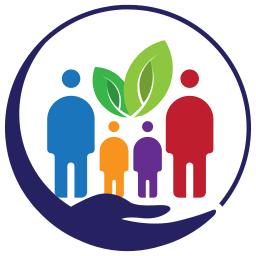What is an FHSA?
Work towards your goal of buying your first home with a First Home Savings Account (FHSA). The FHSA is a new registered plan that can help you save for your first home tax-free. If you’re at least 18 (and no less than the age of majority in your province), have a Social Insurance Number (SIN) and have not owned a home where you lived this year or at any time in the preceding four calendar years, you may be eligible to open an FHSA

Reasons to Invest in an FHSA:
- Use it to save up to $40,000 for your first home
- Contribute tax-free for up to 15 years
- Unused contribution room can be carried over to the next year, up to a maximum of $8,000
- Potentially reduce your tax bill and carry forward undeducted contributions indefinitely
- Pay no taxes on any investment earnings
- Complements the Home Buyers’ Plan (HBP)
How an FHSA Works
Here’s how an FHSA can help you save for your first home:
A First Home Savings Account (FHSA) is a type of registered plan, which means you can hold investments in it to help you reach your goal of owning a home faster.
There’s no minimum balance required to open an account and you’ll be able to hold a full range of investment products.
Tip: Whether you want to make your own investment decisions or have professionals manage your investments for you, it’s easy to invest with us.
Since your investment earnings aren’t taxed, your money will have the opportunity to grow faster in an FHSA than it would in a traditional savings account.
You can make tax-deductible contributions of up to $8,000 a year in an FHSA, up to a lifetime maximum of $40,000. Unused room can be carried over to the next year, up to a maximum of $8,000.
Tip: Setting up regular (weekly, monthly, etc.) automatic contributions into your FHSA is an easy way to help you stay on track towards your savings goals.
Make a tax-free withdrawal at any time to purchase a qualifying home.
Tip: You’ll be able to use both an FHSA and the Home Buyers’ Plan (HBP) to purchase a qualifying home. Keep in mind that you’ll have to repay any funds through the HBP, but not with an FHSA.
Numbers to Know
$8,000
$40,000
$0
Benefits When You Invest With Us
Free Financial Advice to help you decide
Setup an initial meeting with our advisor to plan your FHSA contributions.
Advice when you need it
Speak with an advisor in-person, by phone or over video—whether you’re investing $50 or $5,000.
Freedom to invest how you want
Work with an advisor, do it yourself, let advisors invest for you or try all three.

Need FHSA answers now?
Call +1 438 701 3770 to speak to our advisors right away, or book some time with them.
+1 855 410 9006 (Toll-Free for Outside Canada)
FHSA FAQs
The balance within your initial First Home Savings Account (FHSA) must be utilized either by December 31st of the 15th year following the establishment of your first FHSA or by the year of your 71st birthday, whichever occurs earlier.
Should you fail to utilize the funds within this timeframe, they can be seamlessly transferred without tax implications to either your Registered Retirement Savings Plan (RRSP) or your Registered Retirement Income Fund (RRIF), thereby preserving your RRSP contribution room. Otherwise, any withdrawal beyond this period will be subject to taxation.
There are 2 ways you can open an account:
1) Talk to our Advisor
- You can talk our advisors and see which product suits your needs
- Our advisors will help you to open the FHSA account.
2) Through our Affiliates
- You can go to our affiliates and they can offer you services based on your needs.
- You will get special discounts, features if you choose to go through us.
To open a First Home Savings Account (FHSA), you must be:
- At least 18 years of age and no less than the age of majority in the province where you live
- A Canadian resident
- A first-time homebuyer (meaning, you and/or your spouse or common-law partner have not owned a home where you lived in the calendar year in which you open the account or at any time in the preceding four calendar years)
You can hold the following product offerings in a First Home Savings Account (FHSA):
- Savings deposits
- Stocks, options and bonds
- Exchange-Traded Funds (ETFs)
- Cash
- GICs
- Mutual Funds
- Segregated Funds
It depends. If you make a qualifying tax-free withdrawal, no taxes will be deducted from the amount, and you will not have to include the amount in your taxable income that year.
To make a qualifying withdrawal from your First Home Savings Account (FHSA) you must meet the following conditions:
- Be a first-time homebuyer
- Have a written agreement to buy or build a qualifying home in Canada by October 1 of the year after you make the withdrawal from your FHSA
- Intend to live in the home within a year of buying or building it
- Be a resident of Canada throughout the period from the withdrawal to the acquisition of the house
You can also transfer funds from your FHSA to another FHSA, Registered Retirement Savings Plan (RRSP), or Registered Retirement Income Fund (RRIF) on a tax-free basis.
If you make a withdrawal from your FHSA for any other purpose, your withdrawal will be subject to withholding tax and the amount you withdraw will be added to your taxable income. Plus, your FHSA contribution room will not be re-instated.
Once you make a qualifying withdrawal, you will need to close your account and transfer or withdraw all funds left in your FHSA by December 31 of the following year. If you make a non-qualifying withdrawal, you will not have to close your account (unless you have had it for 15 years or are turning 71)—but your contribution room will not be reinstated.
You can open a First Home Savings Account (FHSA) and make tax-deductible contributions of up to $8,000 annually, to a lifetime maximum of $40,000. If you don’t contribute the full $8,000 in a single year, the balance can be carried forward and added to next year’s contribution amount. This means that if you contribute less than $8,000 within the year, you can contribute the unused amount in the subsequent year in addition to the $8,000 annual contribution limit and contribute a maximum of $16,000 in a given year.
Your funds and any investment earnings can stay in the FHSA and grow tax-free with every contribution you make until you’re ready to buy your first home. As long as you use the funds for your qualifying first home, you won’t have to pay any taxes on your FHSA withdrawal(s).
The funds in your FHSA have to be used by December 31 of the 15th year after opening the account, or by December 31 of the year you turn 71, whichever comes earlier. If you have not used the funds in your FHSA by that time, you can transfer the funds from your FHSA on a tax-free basis to your Registered Retirement Savings Plan (RRSP) without impacting your RRSP contribution room, or to your Registered Retirement Income Fund (RRIF). Otherwise, you can withdraw funds from your FHSA, but your withdrawal will be taxed.
No, you can use both your First Home Savings Account (FHSA) as well as make a withdrawal from your Registered Retirement Savings Plan (RRSP) under the Home Buyers’ Plan (HBP)(opens in a new window) to purchase a qualifying home. Keep in mind that with a HBP withdrawal, you’ll have to repay any funds you withdraw from your RRSP. There is no repayment requirement for withdrawals from an FHSA.
Yes, you can carry forward any unused FHSA contribution room from the prior year up to a maximum of $8,000 (subject to your lifetime contribution limit of $40,000). This means that if you contribute less than $8,000 within the year, you can contribute the unused amount in the subsequent year in addition to the $8,000 annual contribution limit.
For example, if you contribute $5,000 to your FHSA in 2023, you would be allowed to contribute $11,000 in 2024 (i.e., $8,000 plus the remaining $3,000 from 2023).
Choose from the following options to open an account:
Trade and Invest with Direct Investing
- Call your own shots with our low-cost online trading and investing service
- Hold stocks, bonds, exchange-traded funds (ETFs) and more in your FHSA
- Make informed investment decisions using expert research and other resources like free real-time streaming quotes
Get a Professionally-Built Portfolio without the Work
- Our pros will pick, buy and manage the investments in your FHSA for you
- We match you to a low-cost portfolio of exchange-traded funds (ETFs) based on your answers to a few simple questions
- Track your progress online anytime and speak to a Portfolio Advisor if you have questions or need advice
